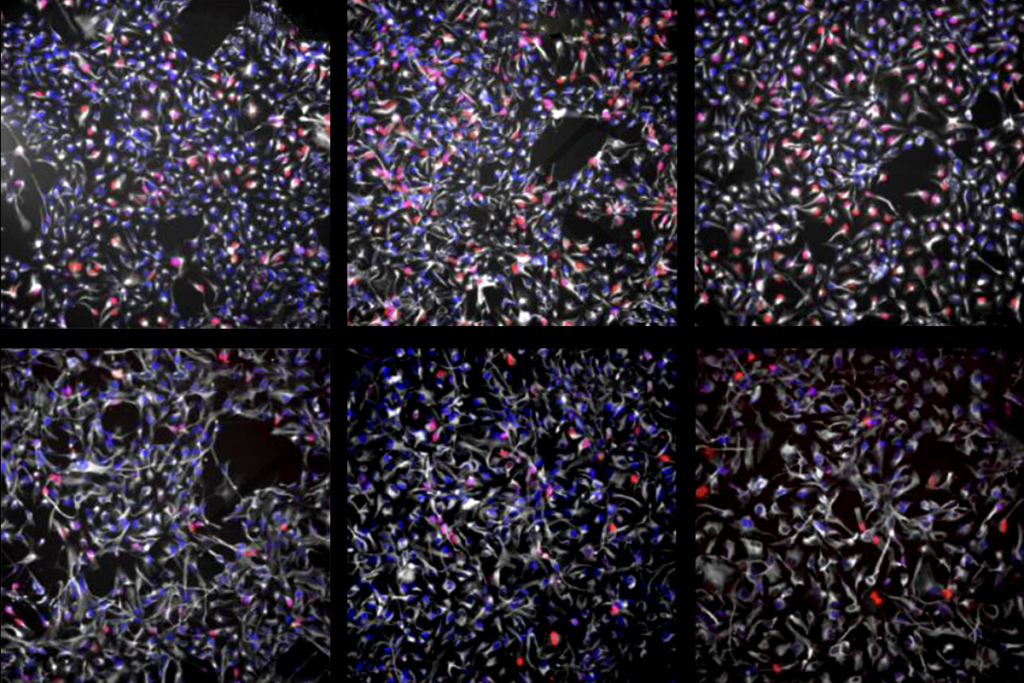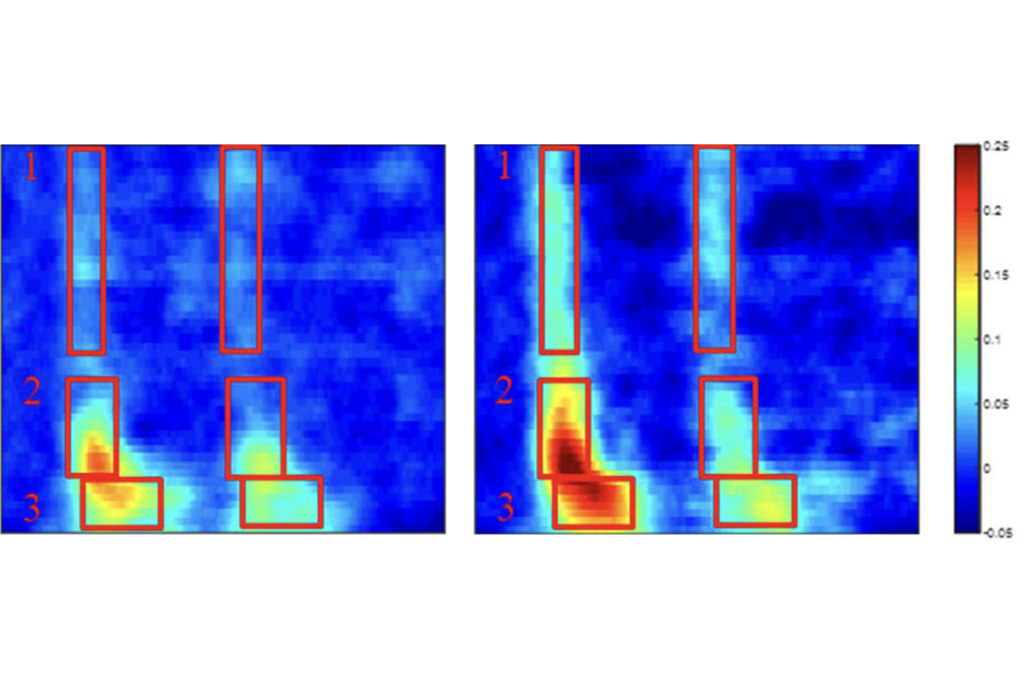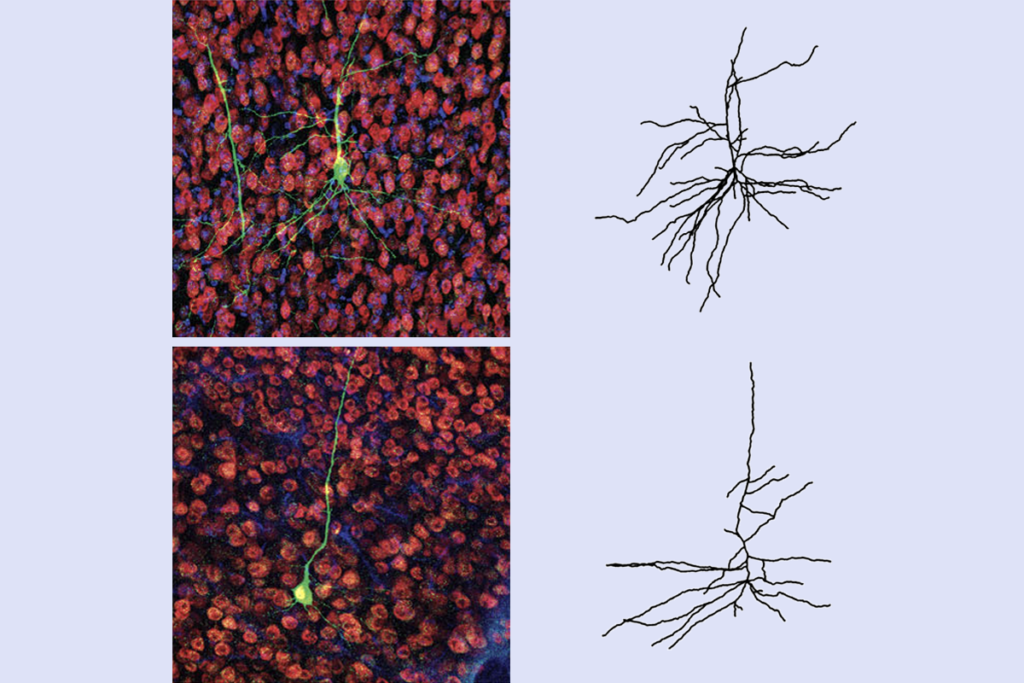Genetic analysis links autism to missing brain structure
The largest genetic analysis yet conducted of people lacking a brain structure called the corpus callosum shows that the condition shares many risk factors with autism. The study was published 3 October in PLoS Genetics.
The largest genetic analysis yet conducted of people lacking a brain structure called the corpus callosum shows that the condition shares many risk factors with autism. The study was published 3 October in PLoS Genetics1.
The corpus callosum is the thick bundle of nerve fibers that connects the two hemispheres of the brain. People lacking this structure, a condition called agenesis of the corpus callosum (AgCC), often have social impairments, and roughly one-third of adults meet diagnostic criteria for autism2. Children with autism seem to have a smaller corpus callosum than controls do3.
The new study adds objective genetic evidence to this picture.
“It’s the first time that anyone has really systematically studied a large group of these patients at once,” says study co-leader Elliott Sherr, professor of neurology at the University of California, San Francisco School of Medicine.
He and his colleagues looked for copy number variations (CNVs) — deletions or duplications of large stretches of DNA — in the genomes of 255 individuals with the condition and 2,349 controls.
Compared with controls, people with AgCC have more rare, large CNVs spanning many genes, the researchers found. They also have more de novo CNVs, meaning those not inherited from either parent.
Similar patterns have been found in individuals with autism.
“This paper is nicely consistent with previous studies of developmental delay and autism, where it has been shown that there is a contribution from large CNVs,” says Jonathan Sebat, chief of the Beyster Center for Molecular Genomics of Neuropsychiatric Diseases at the University of California, San Diego, who was not involved with the work. Sebat and other researchers have identified an elevated rate of de novo CNVs in people with autism4, 5, 6.
Emerging overlap:
The new study identified de novo CNVs in 9.4 percent of individuals with AgCC. That’s similar to the roughly 6 to 10 percent rate of de novo CNVs found in studies of autism. Many of the genomic regions affected by CNVs in the new study have also turned up in autism.
Of 34 de novo CNVs found in the participants with AgCC, 13 of them, or 38 percent, share at least half their genes with de novo CNVs found in autism.
“This is the first red-meat data” showing the two conditions may share an underlying cause, says study co-leader William Dobyns, professor of genetic medicine at the University of Washington in Seattle.
There are known overlaps among genetic risk factors for autism, epilepsy and intellectual disability. “My sense is that there’s partial specificity” of CNVs, says Joseph Buxbaum, professor of psychiatry at Mount Sinai School of Medicine in New York, who was not involved with the work. “I think that the idea that there’s this cluster of neurodevelopmental phenotypes that come from a similar risk is an accurate one.”
The new study suggests that AgCC may be part of that cluster.
“The idea that there’s this cluster of neurodevelopmental phenotypes that come from a similar risk is an accurate one.”
However, researchers cannot yet say where in the genome the important overlaps between autism and AgCC occur. The team would need to analyze CNVs in at least 2,000 people with the malformation in order to do that, Sherr says. “I still think the numbers are too small,” he says.
Others say the overlap identified in the new study may not be meaningful.
Sebat notes that 27 percent of the AgCC participants also have autism. “If [the researchers] removed all the autism patients from their sample and found the same thing, then that would be something,” Sebat says.
Sherr points out that most individuals with AgCC have some form of developmental delay, suggesting that the CNVs confer shared risk for AgCC and autism or other developmental delay. “We have work in progress on specific genes that cause both AgCC and autism,” Sherr adds. “So I think it’s just a matter of time before there’s sufficient evidence to make the point clear.”
Complex patterns:
One of the most common genetic changes in AgCC is a disruption of a chromosomal region known as 8p23.11-p11.1, seen in about 2 percent of the participants. By comparing this region in different individuals, the researchers were able to narrow down the part of it that is likely to be most important in causing the disorder.
In one participant with AgCC, the team identified a deletion of a chromosomal region called 16p13.11. They also sequenced his exome, or protein-coding part of the genome, and found that he has a mutation in the other copy of a gene in this region, NDE1. “That’s the kind of complex pattern I think we’ll see more and more of as our genetic tools are easier to use,” Sherr says. The team is sequencing the exomes of other participants.
In the meantime, the researchers also analyzed CNVs in individuals with two other common brain malformations. They looked at 147 people with polymicrogyria, in which the cerebral cortex develops too many small folds, or gyri, and 220 people with cerebellar hypoplasia. The latter is characterized by a smaller-than-normal cerebellum, a part of the brain involved in movement and coordination.
Puzzlingly, the study showed that the rate of CNVs in individuals with either of these two brain malformations is no different than that in controls. “We were totally blindsided,” Dobyns says.
Others find the results surprising as well. “I thought the brain malformations would have more genetic similarity with each other than agenesis would with autism,” says Lynn Paul, senior research scientist at the Caltech Emotion and Social Cognition Laboratory in Pasadena, California, who was not involved with the work.
The lack of CNVs in these conditions may indicate that non-genetic causes play a larger role in causing them, Dobyns says. Polymicrogyria is associated with cytomegalovirus infection during the second or third trimester of pregnancy. And there is emerging evidence that cerebellar hypoplasia can result from a lack of oxygen or even minor bleeding in the brain around the time of birth, particularly in those born prematurely.
But some researchers say it is too early to rule out a contribution of CNVs to these two disorders. “I think these are preliminary results based on small groups,” Sebat says. A definitive answer would require analyzing the genomes of thousands or tens of thousands of individuals, he adds.
References:
1: Sajan S.A. et al. PLoS Genet. 9, e1003823 (2013) PubMed
2: Lau Y.C. et al. J. Autism Dev. Disord. 43, 1106-1118 (2013) PubMed
3: Frazier T.W. et al. J. Autism Dev. Disord. 42, 2312-2322 (2012) PubMed
4: Sebat J. et al. Science 316, 445-449 (2007) PubMed
5: Levy D. et al. Neuron 70, 886-897 (2011) PubMed
6: Sanders S.J. et al. Neuron 70, 863-885 (2011) PubMed
Recommended reading

Glutamate receptors, mRNA transcripts and SYNGAP1; and more

Among brain changes studied in autism, spotlight shifts to subcortex
Explore more from The Transmitter

Dosage of X or Y chromosome relates to distinct outcomes; and more


